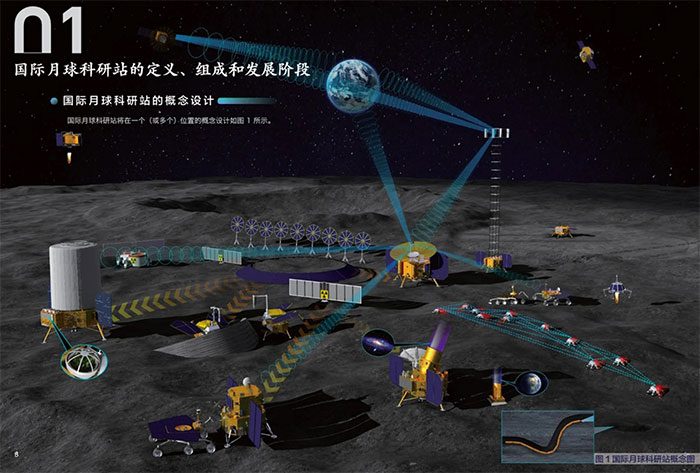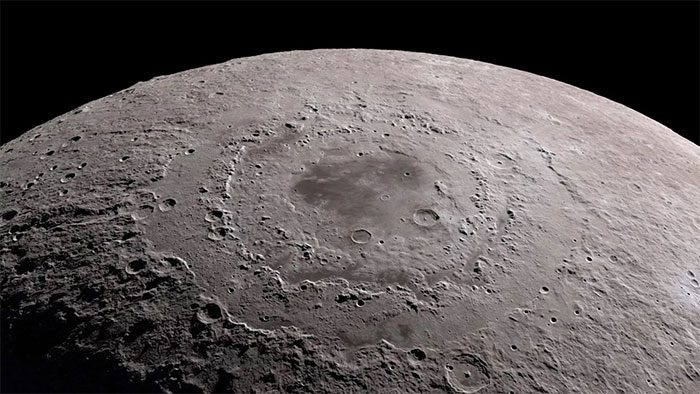China to Provide Nuclear Power for Scientific Research Station at the Moon’s South Pole.
According to the South China Morning Post, Mr. Wu Weiren, the chief designer of the Chinese Lunar Exploration Program, stated in an interview with CCTV: “We are developing a new system that utilizes nuclear energy to address the increasing long-term energy demands of the lunar scientific research station.”

Design of the International Lunar Research Station – a facility being developed by the China National Space Administration and Russian partner Roscosmos. (Photo: CNSA).
However, Mr. Wu did not disclose specific technical details about the new reactor. Previous information indicated that this reactor could produce 1 megawatt of electricity, enough to power hundreds of households for a year.
Nuclear energy is a stable and reliable power source that does not depend on location or sunlight. It can provide the necessary energy to operate equipment, generate oxygen, and separate water for astronauts.
The Chinese lunar research station is expected to be completed by 2028. The basic structure of the station includes a lander, a hopper, an orbiter, and a nuclear-powered rover.
Mr. Wu mentioned that the rover, operated by astronauts, will be significantly larger than the two that China has already deployed on the Moon, including the solar-powered Yutu-2 rover, which has been operational for nearly four years. Additionally, the new system can also power the hopper – a device capable of “taking off from the Moon’s surface multiple times” and capable of maneuvering in and out of obscured craters to search for water sources.
Nuclear energy will also support the communication facilities of the lunar research station, aimed at maintaining contact with Earth as well as transmitting signals between Earth, Mars, and beyond in deep space missions.
According to Mr. Wu, the basic structure of the new system will be established based on the Chang’e 6, 7, and 8 missions. Shortly thereafter, Chinese astronauts will set foot on the Moon for the first time.

Lunar Surface. (Photo: NASA)
The Moon’s south pole has become a popular target for lunar bases. Countries such as China, the United States, and Russia are considering building space bases in this region.
“China is the first country to propose building this research station at the Moon’s south pole,” Mr. Wu stated. The researcher also noted that at a latitude of approximately 89 degrees south, there could be 180 days of continuous sunlight to sustain long-term operations for equipment and astronauts.
China is still working on developing the Chang’e 6, 7, and 8 spacecraft. This is the fourth phase of the country’s lunar exploration program. Over the past 15 years, Beijing has successfully launched five missions – Chang’e 1 to 5 – into orbit and has successfully landed spacecraft to collect samples from the Moon.
Mr. Wu stated that China will focus on four aspects of deep space exploration activities over the next 10 to 15 years. In addition to the lunar base, China will also conduct research on the impact of asteroids, explore planets, and develop other heavy-lift launch vehicles.
“We need to increase the thrust of rockets by at least four times to support crewed landings on the Moon, Mars, and to transport large volumes between the Earth and near-Earth space,” he said.





















































